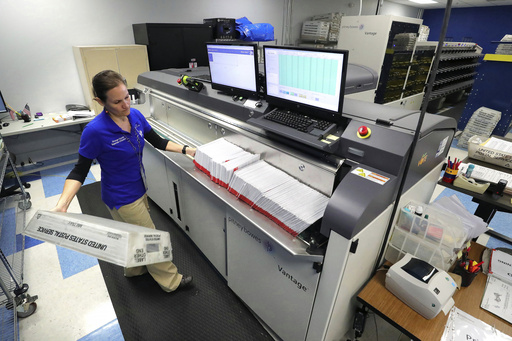
WASHINGTON — During the 2020 presidential election, Florida successfully reported the results within a few hours after polls closed, managing to account for over 99% of all ballots cast. In stark contrast, California faced a situation where nearly one-third of its ballots remained uncounted after election night. The state continued to update its totals on a near-daily basis, extending the counting process until December 3, an entire month post Election Day. This discrepancy is not unusual; California, known as the most populous state in the U.S., typically ranks among the slowest when it comes to finalizing election results, whereas Florida, the third-most populous state, is usually among the quickest.
The U.S. Constitution outlines general principles for the election of a national government, delegating the intricate details to the states. The decisions made by state officials regarding the election process have significant implications for various aspects, including voter casting methods, the speed of counting and reporting the results, election security, and the maintenance of public confidence in the electoral system.
The differing election results timelines in California and Florida arise from a conscious choice by election officials in each state, who prioritize different elements of the voting process.
In California, lawmakers have structured the electoral system to enhance accessibility and boost voter turnout. Citizens can automatically receive their ballots at home, turn them in up to Election Day, and address any ballot-related issues with added time. However, this approach can lead to delays in knowing the final vote counts promptly after polls close. Democratic Assembly member Marc Berman, who wrote the 2021 law transitioning California to a primarily mail-in voting system, emphasized the state’s goal to maximize voter participation, suggesting that while the process may be slower, democracy ultimately benefits from ensuring everyone has the chance to participate effectively.
California’s long-standing practice of absentee voting has paved the way for the evolution toward an all-mail voting system, which was expedited in recent years. A bill passed in 2016 allowed counties to opt into mail-in elections, which was implemented on a temporary basis in 2020 and later solidified into law for the 2022 elections. Research indicates that states like Oregon and Washington, which adopted mail-in voting earlier, saw higher voter turnout rates and increased likelihood of voters completing their ballots.
Despite these benefits, a significant number of voters in California drop off their mail ballots on Election Day, leading to delays in counting. In the past five general elections, approximately 38% of the votes in California were tallied after Election Day. In the 2022 midterm elections, this number reached 50%, reflecting the state’s challenges in handling late mail-ins. The implementation of a postmark deadline in 2015 allowed ballots arriving after Election Day to be counted, provided they were postmarked by that date. This year, ballots may come in up to a week following the election, meaning California will not have a final count until November 12, extending the counting process at least until then for valid ballots.
Conversely, Florida prioritizes speed and efficiency in its election system. Anticipating potential chaos following the controversial 2000 presidential election, when the U.S. Supreme Court resolved a recount dispute, Florida worked to standardize its electoral processes and improve vote validation procedures. Republican Representative Bill Posey, a key supporter of the Florida Election Reform Act of 2001, noted that the legislation’s two main goals of ensuring all legal votes are counted and boosting voter confidence were achieved through mandates such as employing optical ballot scanners in all voting precincts, which eradicated the issue of “hanging chads.”
Florida has structured its deadlines to ensure that ballots do not arrive any later than when tabulation begins. Absentee ballots must be received by 7 p.m. local time on Election Day or they will not be counted, regardless of their mailing date. According to Michael T. Morley, an election law professor at Florida State University, election officials in Florida can process, but not tally, ballots before polls close, which helps expedite the counting process compared to states not allowing preprocessing of mail ballots.
Florida also implements measures to prevent lengthy disputes over potential ballot issues. In precincts, optical scanners detect certain problems, such as excessive candidate selection, that voters can rectify immediately. Additionally, voters who submit a mail-in ballot with a signature mismatch or omission have a window until 5 p.m. two days after the election to rectify the issue, while California allows up to four weeks for voters to address similar inconsistencies.
